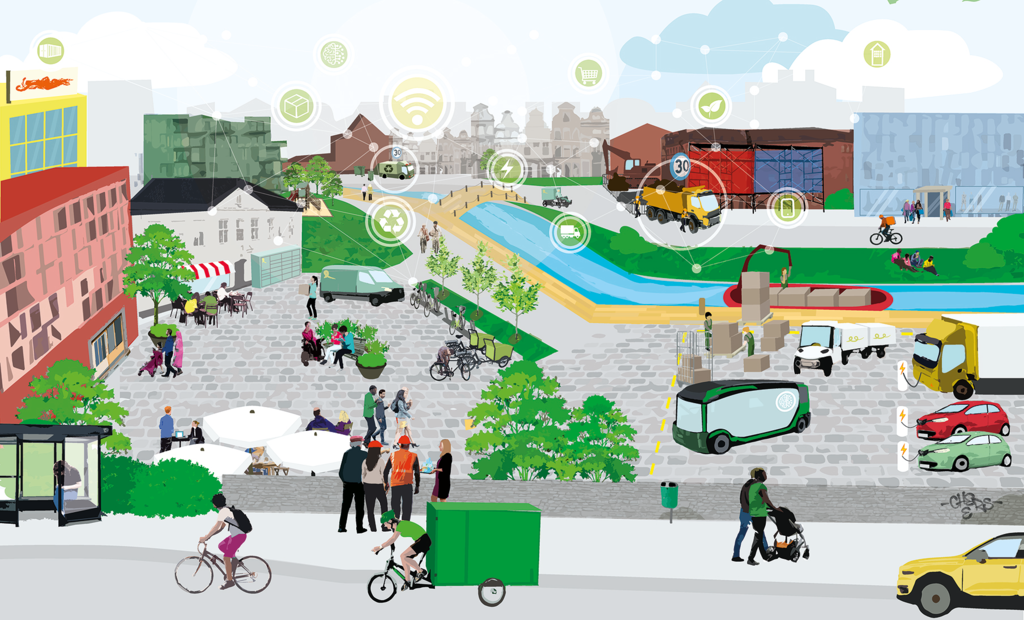Smart Urban Traffic Zones Put People at the Centre
Smart Urban Traffic Zones, a newly launched project, will be part of the future flexible city where vehicles move on people's terms. The goal is that Smart urban traffic zones become a powerful tool, based on geofencing, to contribute to quieter, safer and healthier environments in which to live and reside.

The project includes physical tests, which will be carried out in Stockholm and Gothenburg. These establish the foundation for the core of the project: development of a digital infrastructure, regulations, output calculations and business models required for further establishment. The Smart Urban Traffic Zones project comes from the Research and Innovation programme for Geofencing. Geofencing defines a digitalised geographic zone where the characteristics of connected vehicles can be stipulated - such as speed and whether they run on fuel or electricity.
-"I think Geofencing is one of the most promising tools we have for creating more sustainable urban areas. Partly because it addresses issues that are so broad that they can be safer, more secure, cleaner and less noisy. But also because it is technology that is already available. Now, it is only now a matter of getting parties to work together to develop a common system," says Maria Krafft, Head of Traffic Safety at the Swedish Transport Administration.
Why do we need Smart urban traffic zones?
The project will test the requirements for implementation of geofencing in Swedish urban areas, with a focus on developing the digital infrastructure to establish geofencing zones. The various tests focus mainly on commercial traffic, where effects on safety, speed, congestion and emissions are viewed as having great potential.
-"By focussing on commercial traffic, we can establish geofencing more quickly as a procurement requirement to ensure transport quality and then also have the ability to influence other traffic, even if it is not connected. This gives us a gentler traffic rhythm in urban areas," continues Maria Krafft.
Smart means that the conditions in the zones make the vehicle's characteristics adapt to the local environment. The vehicle then provides feedback that it has followed the prompts it has received. The tests include: adapting the speed to the number of unprotected road users moving in the area, changing the powertrain and controlling the speed so that the the vehicle gains access to certain areas, and sending a warning signal to vehicles and unprotected road users around construction site exits in order to prevent accidents.
-"Smart urban traffic zones will provide cities and parties who work in cities with a more flexible solution for use of the existing road system. In this way, many problems associated with congestion will be reduced, such as queueing, excessive speeds and the fight for space in the city," says Josephine Darlington, Project Manager, CLOSER.
Common Needs Gather Many Parties
Smart urban traffic zones include a broad network of participants from the contracting entity to the end user, who collectively ensure that the smart zones being tested and developed meet real needs, but also ensure usability and implementation. The project is jointly managed by CLOSER and the Swedish Transport Administration, and financed by Vinnova within Challenge-Driven Innovation together with the project participants.
Facts:Key participants: City of Stockholm, City of Gothenburg, Axfood, Martin & Servera, HAVI, Ramudden, M Logistics, Betongindustri, Hövding, VTI, AstaZero, RISE, University of Gothenburg, SAFER, Scania, Viscando, Technolution, CLOSER, the Swedish Transport Administration
Reference group: Daimler, Volvokoncernen, DB Schenker, AI Innovation of Sweden, Chalmers Fastigheter, Chalmers, POC.
